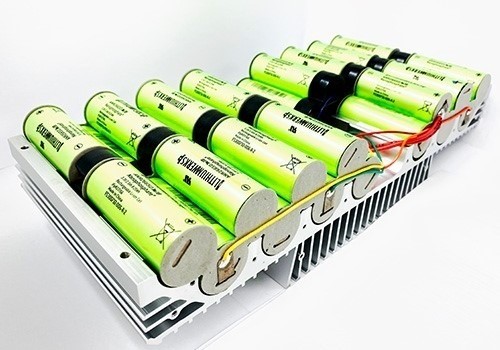Lithium-ion batteries, particularly the 18650 battery pack design, have become the industry standard for many applications due to their high energy density and long lifespan. Understanding how to calculate a lithium-ion battery pack's capacity and runtime is essential for ensuring optimal performance and efficiency in devices and systems.
Understanding Battery Pack Design
The battery pack design involves assembling multiple cells to achieve the desired voltage and capacity. In an 18650 battery pack design, the cells are typically connected in series and parallel configurations. Connecting cells in series increases the voltage, while connecting them in parallel increases the capacity.
Calculating Battery Capacity
Battery capacity is measured in ampere-hours (Ah) and indicates how much charge a battery can hold. To calculate the capacity of a lithium-ion battery pack, follow these steps:
- Determine the Capacity of Individual Cells: Each 18650 cell has a specific capacity, usually between 2,500mAh (2.5Ah) and 3,500mAh (3.5Ah).
- Identify the Parallel Configuration: Count the number of cells connected in parallel. For instance, if four cells are connected in parallel, the total capacity is the sum of the individual capacities.
Total Capacity (Ah)=Capacity of One Cell (Ah)×Number of Parallel Cells\text{Total Capacity (Ah)} = \text{Capacity of One Cell (Ah)} \times \text{Number of Parallel Cells}Total Capacity (Ah)=Capacity of One Cell (Ah)×Number of Parallel Cells
Example: If each cell is 3,000mAh (3Ah) and there are four parallel cells,
Total Capacity=3Ah×4=12Ah\text{Total Capacity} = 3 \text{Ah} \times 4 = 12 \text{Ah}Total Capacity=3Ah×4=12Ah
Calculating Battery Pack Voltage
The voltage of a battery pack is determined by the series configuration. Each 18650 cell typically has a nominal voltage of 3.7V. To calculate the total voltage of the battery pack, multiply the number of cells in series by the nominal voltage of one cell.
Total Voltage (V)=Nominal Voltage of One Cell (V)×Number of Series Cells\text{Total Voltage (V)} = \text{Nominal Voltage of One Cell (V)} \times \text{Number of Series Cells}Total Voltage (V)=Nominal Voltage of One Cell (V)×Number of Series Cells
Example: If there are three cells in series,
Total Voltage=3.7V×3=11.1V\text{Total Voltage} = 3.7 \text{V} \times 3 = 11.1 \text{V}Total Voltage=3.7V×3=11.1V
Calculating Battery Pack Capacity and Runtime
To calculate the runtime of a battery pack, you need to know the device's power consumption. Power consumption is typically measured in watts (W).
- Calculate the Total Energy Capacity: This is done by multiplying the total capacity by the total voltage.
Total Energy Capacity (Wh)=Total Capacity (Ah)×Total Voltage (V)\text{Total Energy Capacity (Wh)} = \text{Total Capacity (Ah)} \times \text{Total Voltage (V)}Total Energy Capacity (Wh)=Total Capacity (Ah)×Total Voltage (V)
Example: For a battery pack with 12Ah capacity and 11.1V,
Total Energy Capacity=12Ah×11.1V=133.2Wh\text{Total Energy Capacity} = 12 \text{Ah} \times 11.1 \text{V} = 133.2 \text{Wh}Total Energy Capacity=12Ah×11.1V=133.2Wh
2. Determine Device Power Consumption: Identify how much power (in watts) the device consumes.
3. Calculate Runtime: Divide the total energy capacity by the device's power consumption.
Runtime (hours)=Total Energy Capacity (Wh)Power Consumption (W)\text{Runtime (hours)} = \frac{\text{Total Energy Capacity (Wh)}}{\text{Power Consumption (W)}}Runtime (hours)=Power Consumption (W)Total Energy Capacity (Wh)
Example: If the device consumes 20W,
Runtime=133.2Wh20W=6.66hours\text{Runtime} = \frac{133.2 \text{Wh}}{20 \text{W}} = 6.66 \text{hours}Runtime=20W133.2Wh=6.66hours
Factors Affecting Capacity and Runtime
Several factors can influence the actual capacity and runtime of a lithium-ion battery pack:
- Temperature: Extreme temperatures can reduce battery efficiency and lifespan.
- Age: Over time, the capacity of lithium-ion batteries diminishes.
- Usage Patterns: Frequent deep discharges can shorten battery life.
- Quality of Cells: Variations in manufacturing can affect performance.
Importance of Accurate Calculations
Accurate calculations of capacity and runtime are crucial for designing reliable and efficient battery pack design. These calculations ensure that the battery pack meets the specific energy requirements of the device or system, avoiding underperformance and potential damage.
Wrapping Up
Understanding how to calculate the capacity and runtime of lithium-ion battery packs is essential for optimizing their performance and longevity. By following the outlined steps and considering the influencing factors, one can effectively design and implement reliable battery solutions. At Emerging Power, we specialize in creating custom 18650 battery pack designs tailored to meet diverse energy needs, ensuring optimal performance and reliability in every application.

